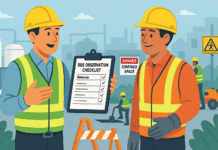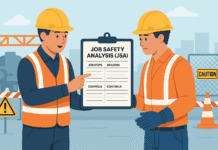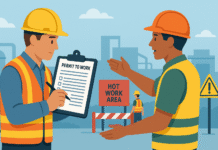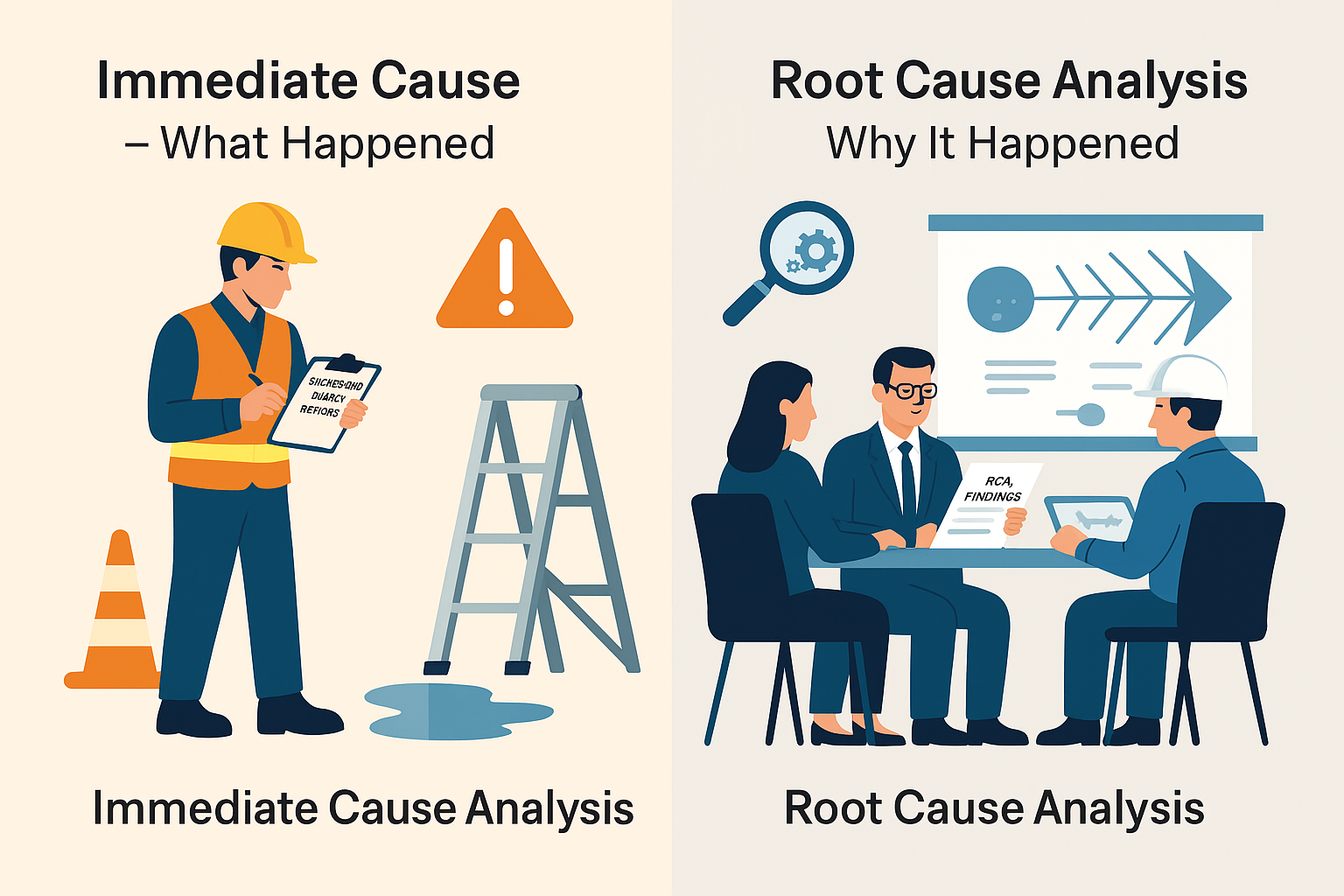
Larsen & Toubro Limited Safety Officer Interview Questions and Sample Answers
Larsen & Toubro Limited, commonly known as L&T, stands as a prominent conglomerate in India, encompassing various sectors like technology, engineering, construction, manufacturing, and more. Established in 1938, it has grown to become one of the largest and most respected companies globally.
Role of a Safety Officer at Larsen & Toubro Limited
Within L&T, the role of a Safety Officer is pivotal. They play a crucial part in ensuring the implementation and adherence to safety protocols across diverse projects. A Safety Officer shoulders the responsibility of creating a secure work environment while complying with industry standards and legal regulations.
Preparing for a Safety Officer Interview
Before stepping into an interview at Larsen & Toubro Limited for the Safety Officer position, it’s imperative to comprehend the company’s ethos, emphasizing safety as a core value. Additionally, conducting comprehensive research on prevalent safety protocols and industry standards is fundamental. Reviewing commonly asked interview questions specific to safety roles can significantly aid in preparation.
Here are some potential interview questions and sample answers for a Safety Officer position at Larsen & Toubro Limited:- Can you describe your experience in ensuring safety compliance within a construction environment?Sample Answer: “In my previous role, I was responsible for implementing and monitoring safety protocols on construction sites. This involved conducting regular inspections, identifying potential hazards, and ensuring all workers adhered to safety regulations outlined by local authorities and the company. I also conducted safety training sessions to educate workers on best practices.”
- How do you prioritize safety measures on a construction site with multiple ongoing tasks?Sample Answer: “Prioritizing safety on a bustling construction site involves a combination of risk assessment and clear communication. I categorize tasks based on their potential risk levels and allocate resources accordingly. Additionally, I consistently communicate safety protocols to all team members and emphasize the importance of adhering to these measures at all times.”
- What steps do you take to investigate and address safety incidents on-site?Sample Answer: “When an incident occurs, my immediate focus is on securing the area to prevent further harm. I conduct a thorough investigation, gathering information from witnesses and examining the scene to understand the root cause. Following this, I document the incident, analyze findings, and propose corrective actions to prevent similar occurrences in the future.”
- How do you stay updated with the latest safety regulations and best practices in the industry?Sample Answer: “Continuous learning is vital in the safety field. I regularly attend seminars, workshops, and industry conferences to stay abreast of the latest safety regulations, technological advancements, and best practices. I also engage in online forums and subscribe to reputable safety publications to keep myself updated.”
- Can you provide an example of a successful safety initiative you implemented in your previous role?Sample Answer: “In a previous project, I noticed a recurring issue with inadequate personal protective equipment (PPE) compliance among workers. To address this, I initiated a comprehensive PPE training program that included demonstrations, hands-on workshops, and periodic assessments. As a result, we saw a significant increase in PPE adherence, reducing the number of related incidents by 40%.”
- How do you ensure that subcontractors and external parties comply with safety standards on-site?Sample Answer: “Maintaining a unified approach to safety involves clear communication and collaboration. I regularly conduct orientation sessions for subcontractors, outlining our safety protocols and expectations. Additionally, I establish regular check-ins and audits to ensure they’re implementing and adhering to the same safety standards we uphold.”
- Describe a situation where you had to handle resistance or non-compliance regarding safety regulations. How did you address it?Sample Answer: “In a scenario where resistance to safety measures emerged, I initiated open dialogue to understand the concerns. I explained the rationale behind the safety protocols, highlighting their importance for everyone’s well-being. If necessary, I provided additional training or personalized guidance to address specific concerns while emphasizing the non-negotiable nature of safety standards.”
- What methods do you use to promote a culture of safety among workers?Sample Answer: “Building a safety-conscious culture involves proactive engagement. I organize regular toolbox talks, safety meetings, and interactive training sessions to engage workers. Additionally, I encourage an open-door policy, welcoming suggestions and feedback on safety improvements. Recognizing and celebrating safety achievements also contributes to fostering a positive safety culture.”
- How do you handle emergency situations on-site, such as accidents or natural disasters?Sample Answer: “During emergencies, swift and structured action is crucial. I ensure that emergency response plans are in place and that all team members are trained on these procedures. I oversee drills to simulate various emergency scenarios, ensuring everyone is familiar with their roles and responsibilities. I also collaborate closely with emergency services to facilitate a coordinated and effective response.”
- In what ways do you integrate technology or innovation to enhance safety practices in your role?Sample Answer: “I actively explore technological advancements that can elevate safety standards. For instance, I’ve implemented digital safety inspection apps to streamline reporting and enhance data accuracy. Additionally, I advocate for the use of wearable technology for real-time monitoring of environmental conditions or worker vital signs, which aids in early hazard identification and response.”
- How do you ensure that safety measures evolve and adapt to changing project requirements or environments?Sample Answer: “Adaptability is key in ensuring safety remains effective amidst changing dynamics. I regularly conduct risk assessments to identify potential alterations in project requirements or environmental factors. Based on these assessments, I update safety protocols, retrain workers if necessary, and communicate any changes effectively to ensure seamless adaptation.”
- Can you provide an example of a time when you successfully improved safety performance metrics on a project?Sample Answer: “In a past project, I noticed an increase in minor incidents indicating a potential for more serious accidents. I led a comprehensive safety campaign focusing on proactive hazard identification and mitigation. By engaging workers, implementing additional safety checkpoints, and intensifying safety audits, we managed to reduce incidents by 30% within three months.”
- How do you collaborate with other departments or teams to ensure a holistic approach to safety across the organisation?Sample Answer: “Collaboration is vital for a comprehensive safety strategy. I actively engage with cross-functional teams, participating in regular safety committee meetings to align safety goals and initiatives. Additionally, I provide expertise and support to departments during planning stages to embed safety considerations into their processes from the outset.”
- What strategies do you use to keep employees motivated and engaged in following safety protocols?Sample Answer: “Motivation stems from understanding the ‘why’ behind safety. I ensure workers comprehend the personal benefits of adhering to safety protocols by illustrating how it safeguards their well-being. Implementing recognition programs for individuals or teams adhering to safety standards also fosters a sense of pride and ownership in safety practices.”
- How do you ensure ongoing evaluation and improvement of safety procedures on-site?Sample Answer: “Continuous improvement is central to effective safety management. I regularly conduct audits, gather feedback from workers, and analyse incident reports to identify areas for enhancement. Additionally, I collaborate with safety experts and leverage benchmarking to incorporate industry best practices into our safety procedures.”
- How do you handle situations where there might be a conflict between project deadlines and safety protocols?Sample Answer: “While meeting project deadlines is crucial, safety can never be compromised. I work closely with project managers to find a balance by proposing efficient work methods or additional resources to maintain both safety standards and project schedules. However, if a conflict arises, I advocate prioritising safety without exception.”
- Can you share your approach to ensuring effective communication of safety policies and procedures across diverse teams?Sample Answer: “Effective communication is foundational for successful safety implementation. I utilise various channels, including visual aids, multilingual materials, and interactive training sessions, to ensure all team members comprehend safety policies. Regular safety briefings and open forums allow for continuous dialogue, ensuring clarity and understanding across diverse teams.”
- In a high-pressure environment, how do you maintain your focus on safety without compromising productivity?Sample Answer: “Maintaining a safety-first mindset under pressure is crucial. I emphasise the importance of pre-planning and risk assessment to prevent last-minute rushes. I encourage a proactive approach among team members to identify potential hazards before they impact productivity. This foresight minimises disruptions while prioritising safety.”
- Describe a time when you had to implement a significant change in safety procedures. How did you ensure a smooth transition?Sample Answer: “During a project expansion, I recognised the need to revise our safety protocols to accommodate increased workloads. I initiated comprehensive training sessions to educate the team on the revised procedures. Additionally, I solicited feedback and addressed concerns to ensure a collective understanding, facilitating a smooth transition without compromising safety.”
- How do you handle confidential or sensitive safety issues within the organisation?Sample Answer: “Confidentiality is paramount in handling sensitive safety matters. I adhere strictly to company policies on confidentiality while addressing such issues. I report upwards through the designated channels while safeguarding the identities of individuals involved, ensuring that corrective actions are taken without compromising privacy.”
Conclusion
In conclusion, preparing for a Safety Officer interview at Larsen & Toubro Limited involves a comprehensive understanding of the company’s values, diligent research on safety protocols, and adeptly addressing interview questions by emphasizing both technical knowledge and soft skills.
50 HSE Engineer Interview Questions and Sample Answers
50 HSE Officer Interview Questions and Sample Answers
How Much Salary Do You Want? Interview Question and Answer for Fresher and Experienced Candidates
Why Should We Hire You? Interview Question and Answer for Fresher and Experienced Candidates
























